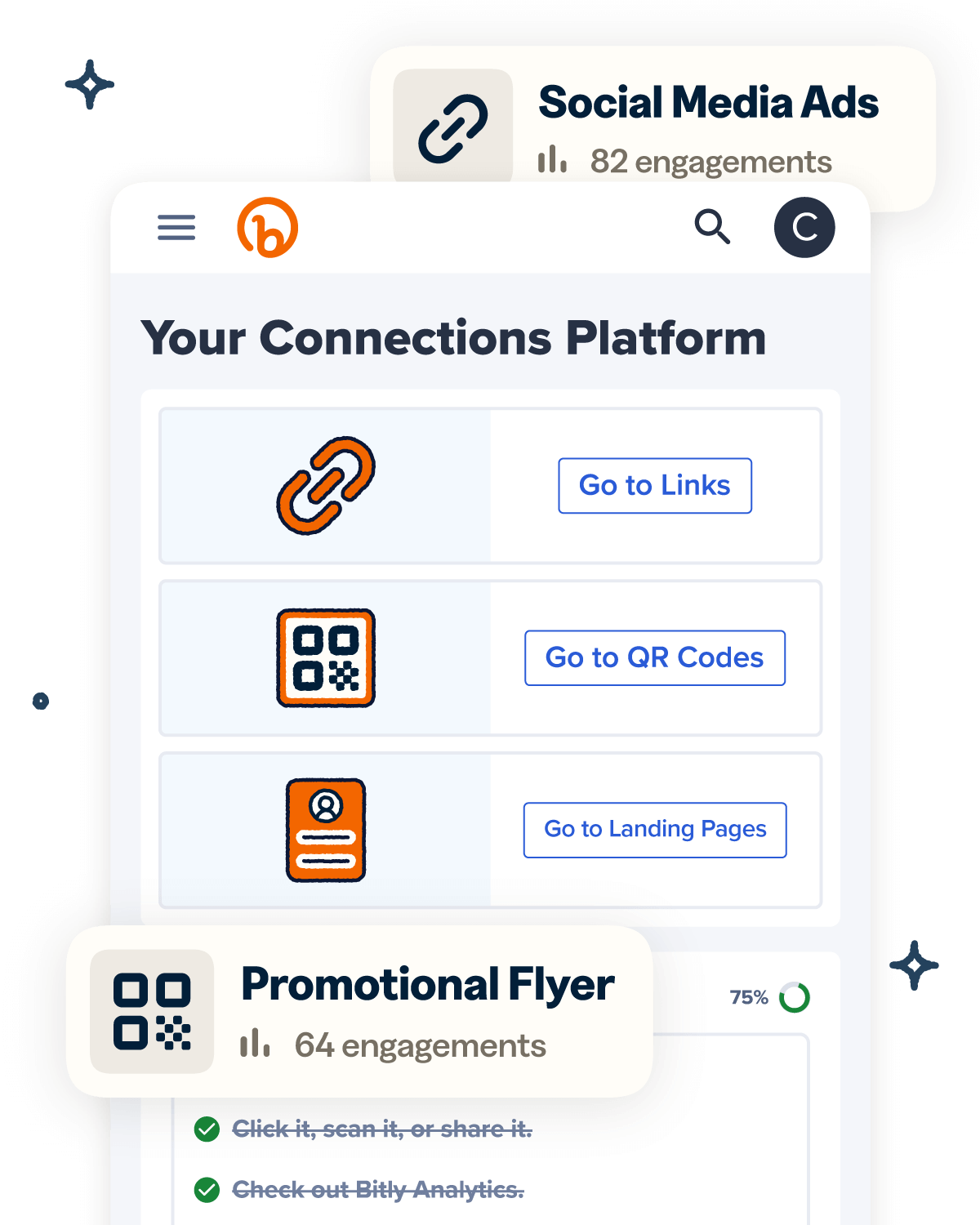Picture a world where customers can instantly access detailed product information with a simple scan. Thanks to GS1 Digital Link, that world is here.
GS1 Digital Link is a cutting-edge method that connects the physical and digital, transforming how brand owners connect with customers and manage their supply chains.
This link is already elevating data accessibility and engagement—and it’s only the beginning. As our GS1 Connect 2024 takeaways highlight, this innovative solution is set to reshape the CPG and retail industries in transformative ways.
In this article, we’ll take a closer look at GS1 Digital Link, diving into its benefits, use cases, and how to implement it in your business.
Note: The brands and examples discussed below were found during our online research for this article.
What is GS1 Digital Link?
Think of GS1 Digital Link as the next generation of 2D barcode technology. Unlike traditional barcodes that store static data, the GS1 Digital Link method encodes product information within a URL.
This opens the door to real-time access to dynamic digital content, such as detailed product descriptions, tracking updates, and inventory insights. It’s a game-changer for businesses, transforming both supply chain operations and customer engagement.
What sets GS1 Digital Link apart from standard GS1 barcodes is its structure, flexibility, and enhanced functionality.
Traditional barcodes encode data in a machine-readable format and typically serve as tools for inventory management. GS1 Digital Link, on the other hand, integrates GS1 identifiers—like the Global Trade Item Number (GTIN)—with the internet.
What is GTIN? Essentially, it’s a globally recognized unique identifier for products, ensuring simple tracking and identification across supply chains. This not only allows for more comprehensive information storage but also enables real-time updates to reflect the latest details.
But GS1 Digital Link goes beyond inventory management to support customer engagement, marketing, and even product authentication. Unlike standard barcodes, which are limited in scope, the GS1 Digital Link method can help businesses connect to multiple destinations, offering a more dynamic, interactive experience.
Now, you might be thinking—doesn’t this sound a lot like a Quick Response (QR) Codes? While both connect physical products with digital resources, GS1 Digital Link takes it a step further.
Standard QR Codes usually direct users to a single web page or resource, whereas GS1 Link allows you to connect to a variety of pages, providing a richer, more flexible digital ecosystem. But this method is often implemented as a 2D Barcode, so the two terms may be used interchangeably.
Why is GS1 Digital Link important?
For modern businesses, GS1 Digital Link offers a versatile tool with a range of practical benefits. This innovative new solution:
Enhances product data and accessibility
Gone are the days when customers and retailers had to hunt for product details online. With GS1 Digital Link, scanning the 2D Barcode instantly unlocks comprehensive information such as ingredients, allergens, sourcing, and safety data.
This instant access doesn’t just make life easier for users—it also supports compliance with regulatory requirements, builds transparency, and fosters brand trust.
In fact, with 81% of shoppers saying they value transparency, providing easy access to this level of detail can significantly boost your brand’s reputation and appeal.
Helps supply chain processes
Boosting supply chain efficiency starts with better product tracking—and that’s where GS1 Digital Link shines as the standardized method for encoding identifiers. Real-time data sharing across the supply chain enhances product visibility and simplifies identification.
This transparency minimizes errors and improves logistics and inventory management. With a clear view of your products’ movement, you can quickly address issues with purchasers, adapt to changes in demand, and prevent costly delays or unexpected shortages.
Supports omnichannel marketing
GS1 Digital Link seamlessly integrates with digital touchpoints like websites, apps, and social media. Whether it’s linking to an exclusive promotion, a product demo, or a customer feedback portal, this method will help unify your digital presence and connect products with the platforms that your customers use daily.
This way, you can deliver a consistent brand experience across platforms to boost your marketing strategy. This enhanced accessibility doesn’t just drive engagement—it also boosts conversions by making it easier for customers to interact with your brand wherever they shop.
Improves customer engagement
GS1 Digital Link redefines the consumer experience by connecting products to helpful and relevant content. Whether it’s step-by-step instructions, product reviews, or time-sensitive promotions, this method of standardization offers unmatched convenience for your audience, turning every interaction into a positive brand experience via identifiers.
Personalization takes it a step further. By directing each customer to a dynamic web page tailored to their specific needs, you can create a uniquely relevant experience. For instance, a healthcare professional purchasing medical supplies might access instructions and compliance details specific to the product they buy.
When 81% of consumers prefer brands that offer personalized experiences, this capability can deepen customer loyalty and make your brand stand out.
Popular use cases for GS1 Digital Link
Introducing 2D Barcodes into your operations requires a versatile approach like GS1 Digital Link. From improving inventory management to enhancing consumer engagement, GS1 offers a versatile range of use cases based on how you need to implement it. Let’s dive into how businesses are putting this technology to work.
Inventory and supply chain management
Manufacturers and retailers are using GS1 Digital Link to simplify inventory processes, improve supply chain efficiency, and boost traceability. When scanned, this can provide instant access to standardized product identifiers like GTINs, allowing businesses to track specific stock levels in real time.
Beyond tracking, they also offer insights into product movement throughout the supply chain. These insights help suppliers plan for potential delays and create contingency strategies to avoid disruptions.
By linking to inventory systems, businesses can automate reorders and get alerts when stock levels run low, reducing the risk of shortages and ensuring smooth operations.
Healthcare and medical device tracking
GS1 Digital Link isn’t limited to retail—it plays an important role in healthcare as well. Healthcare facilities use GSI Digital Link to help track supplies, pharmaceuticals, and medical devices throughout the supply chain, allowing healthcare brands to address delivery delays or disruptions quickly.
Hospitals and healthcare providers also use this system to confirm product authenticity, check expiration dates, and ensure regulatory compliance. Reducing sourcing errors leads to greater accuracy and improved patient safety.
Product authentication and anti-counterfeiting
With counterfeit goods accounting for up to $600 billion in annual losses, ensuring product authenticity is more important than ever. GS1 Digital Link provides a solution to this serious problem by offering access to unique product identifiers that help businesses and consumers confirm item legitimacy.
This functionality is particularly valuable for sensitive products like medications, foods, and beverages, where authenticity directly impacts safety and trust.
Marketing and consumer engagement
GS1 Digital Link for encoding identifiers also impacts post-purchase engagement. By connecting customers directly to content like product tutorials, exclusive offers, and customer reviews, businesses have the opportunity to encourage repeat purchases and foster brand loyalty.
The links can also direct customers to brand stories or sustainability information, helping to build deeper connections.
Product recalls and safety alerts
The beauty of GS1 Digital Link is that it is dynamic. It can provide consumers and businesses access to updated product information through a single 2D barcode or QR Code. This flexibility allows manufacturers to update or expand the information linked to their products, which is especially handy during recalls.
In the event of a recall, retailers and consumers can instantly access real-time updates by simply scanning the designated 2D Barcodes. This immediate access ensures consumer safety and streamlines the return process, saving time and resources for everyone involved.
How to implement GS1 Digital Link for your business
Now that you understand the value of these innovative solutions, how do you use them to provide access to your Digital Product Passports? Here’s how to get started:
Establish GS1 standards compliance
The first step is to ensure your business meets GS1 global standards. This promotes data integrity and universal compatibility, ensuring your method can be recognized and understood across the supply chain.
Follow these steps to establish compliance:
- Find and join a local GS1 organization: Joining your local GS1 organization will provide you with a unique GS1 Company Prefix.
- Allocate GS1 identifiers: Use your assigned prefix to create a GTIN for every product. Ensure each product has a unique identifier to prevent confusion.
- Pick a data carrier: Decide which format you’ll use to encode GS1 Digital Link. The 2D Barcode is a popular choice due to its flexibility and ability to store dynamic data.
- Create a URL for your Digital Link: Structure your URL following GS1 Digital Link standard format—scheme, domain, GTIN, key qualifiers (e.g., serial numbers), and data attributes (e.g., production and expiration dates).
For example, if your GTIN is 01234567891234, your key qualifier is 09/YTRF, and your data attribute is 15=817543, your URL would look like this: https://yrbr.nd.com/01/01234567891234/09/YTRF?15=817543.
- Integrate desired content: Link the URL to relevant digital content, such as product videos, manuals, or special offers.
- Generate your barcode: Embed the URL into a barcode to make it scannable and ready for use.
Integrate with existing product data systems
Next, once your GS1 Digital Link is set up, you’ll need to integrate it with your existing data management systems. This includes your inventory, POS (point-of-sale), CRM (customer relationship management), and ERP (enterprise resource planning) platforms.
Integration ensures seamless data flow and enables real-time updates and product tracking across the supply chain.
To get started, partner with GS1-certified solution providers and use the appropriate APIs for each system. Once integrated, automate data synchronization to ensure you receive up-to-date information.
Keep in mind that this step often requires technical expertise. Consider hiring professionals to ensure a smooth and successful implementation.
Test for compatibility and user experience
Before rolling out GS1 Digital Link, you can request that a GS1-compliant resolver service scan the link you built and check if it returns the expected product information. If it does, you’ll know the link structure is correct and all the data you need is accessible via the URL. Then, you can check it with devices that consumers may use, like mobile devices, to ensure compatibility.
Check that the links direct customers to the correct web pages and experiment with different placements on product packaging to identify the most visible and accessible spots. This makes it easier for customers to access the product identity via the cloud and understand more about the products they may end up purchasing.
Start leveraging GS1 Digital Link and boost product accessibility today
For modern businesses, GS1 Digital Link provides a powerful way to improve product data accessibility, strengthen customer connections, and optimize supply chain operations. By incorporating this innovative technology, you can build transparency, simplify processes, and create better experiences for your customers.
If you need a Certified GS1 Partner to help you implement your strategy, look no further than Bitly. Bitly’s 2D Barcode API simplifies the process of generating, managing, and scaling 2D Barcodes, empowering you to fully leverage GS1 Digital Link.
By automating barcode creation and integrating with existing systems, Bitly ensures your business can adopt this technology effortlessly and maintain a competitive edge.
Sign up for Bitly today to elevate your supply chain traceability and customer experiences with GS1 Digital Link!




